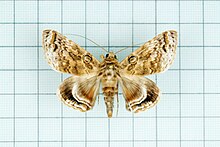
Appias lalage, the spot puffin, is a small butterfly of the family Pieridae, that is, the yellows and whites, which is found in India, Indochina and Hainan.
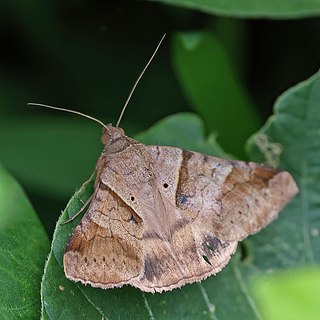
Mocis undata, the brown-striped semilooper, is a moth of the family Erebidae. The species was first described by Johan Christian Fabricius in 1775. It is found in the Afrotropical and Oriental regions, including India and Sri Lanka.

Pterocyclophora pictimargo is a moth of the family Noctuidae. It was first described by George Hampson in 1893 and it is found in Sri Lanka.

Thyas coronata is a species of moth of the family Erebidae first described by Johan Christian Fabricius in 1775. It is found from the Indo-Australian tropics of southern China, Taiwan, Japan, Nepal, India, Sri Lanka to Micronesia and the Society Islands.

Bastilla absentimacula is a moth of the family Noctuidae. It is found from the Indian subregion to Sri Lanka, Andaman Islands, Taiwan, Java and New Guinea.
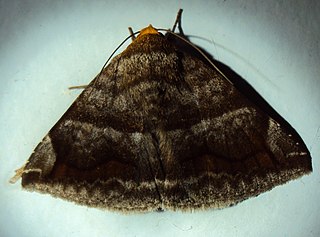
Buzara onelia is a moth of the family Erebidae. It is found from the Indian subregion to Sri Lanka, Myanmar, Sundaland, the Philippines and Japan.

Buzara umbrosa is a moth of the family Erebidae. It is found in China, India and Sri Lanka.

Scopula divisaria is a moth of the family Geometridae. It is found from the Indian subregion, Sri Lanka to Taiwan and Sulawesi.
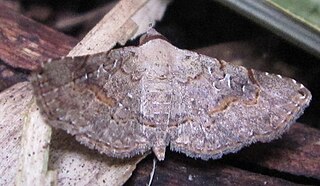
Rhesala moestalis is a species of moth of the family Erebidae first described by Francis Walker in 1866. It is found throughout subtropical Africa, from Sierra Leone in the west to Somalia in the east and South Africa in the south. It is also found on most of the African Indian Ocean islands. and in South and South-East Asia.
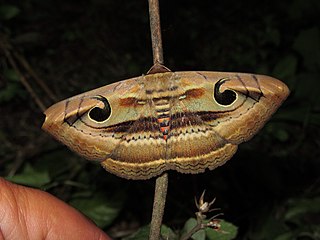
Spirama retorta, the Indian owlet-moth, is a moth of the family Erebidae. The species was first described by Carl Alexander Clerck in 1764. It is found in China, Korea, Japan (Honshu), India, Nepal, Bangladesh, Thailand, Cambodia, Myanmar, Vietnam, Taiwan, Sri Lanka, Malaysia, the Philippines (Luzon), Indonesia ,Japan.

Hyperythra lutea is a moth in the family Geometridae. The species was first described by Caspar Stoll in 1781. It is found in Indian subregion, Sri Lanka, South East Asia, Sundaland.
Scopula adeptaria is a moth of the family Geometridae. It was described by Francis Walker in 1861. It is found in Sri Lanka, India, Taiwan, Hainan, southern Myanmar, Peninsular Malaysia, Borneo, the Philippines, Sumba and northern Australia.
Scopula ferruginea is a moth of the family Geometridae. It was described by George Hampson in 1893. It is endemic to Sri Lanka.
Scopula pedilata is a moth of the family Geometridae. It is found in Sri Lanka.

Plusiodonta coelonota, the snake vine moth, is a species of moth in the family Erebidae. The species was first described by Vincenz Kollar in 1844. It is found from India, Sri Lanka, Myanmar, Andaman Islands, Australia, Papua New Guinea, to South and South-East Asia.
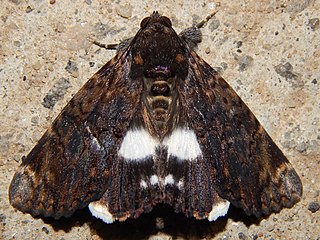
Nagia linteola is a species of moth in the family Erebidae first described by Achille Guenée in 1852. This species occurs in South Africa, the Democratic Republic of the Congo, Yemen, the Comoros, Mauritius, Madagascar, Indonesia (Borneo), India, Sri Lanka, Myanmar, Thailand and in Australia, where it has been recorded from Western Australia, the Northern Territory, Queensland and Victoria.

Harita rectilinea is a moth of the family Noctuidae described by Frederic Moore in 1882. It is found in India, Sri Lanka, Myanmar, Peninsular Malaysia and on Sumatra and Borneo.
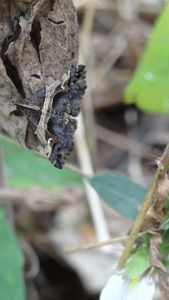
Bertula abjudicalis is a moth of the family Noctuidae first described by Francis Walker in 1859. It is found in India, Thailand, Laos, Vietnam, Taiwan and from Sri Lanka to Australia, where it has been recorded from New South Wales.
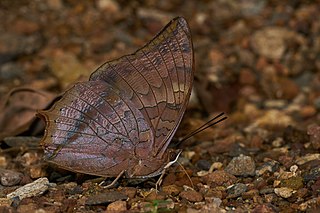
Charaxes psaphon, plain tawny rajah, is a butterfly in the family Nymphalidae. It was described by John Obadiah Westwood in 1847. It is found in the Indomalayan realm.
Episparis liturata is a moth of the family Noctuidae first described by George Hampson in 1893. It is found in India, Sri Lanka, Java, Borneo, Myanmar, China and Thailand.

